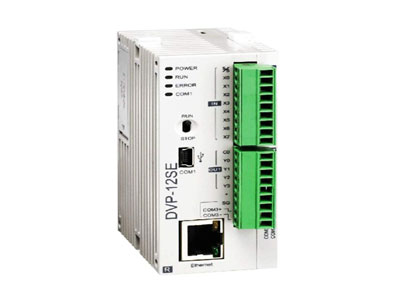What Is Interlocking In PLC?
Key Takeaway
Interlocking in PLC is a safety mechanism. It ensures certain conditions are met before an action occurs. For example, it prevents a machine from starting if safety guards are not in place. This logic function helps avoid dangerous actions and protects both equipment and operators. Interlocking uses sensors and logic to create these safety conditions. It’s essential in industrial automation to ensure safe and efficient operations. By using interlocks, you can prevent accidents and improve system reliability.
Definition and Purpose of Interlocking
Interlocking in PLC (Programmable Logic Controller) systems refers to a control method used to prevent undesired states in industrial processes, ensuring safety and operational integrity. The primary purpose of interlocking is to make certain conditions are met before an action is allowed to proceed. For example, it ensures that a machine cannot start unless all safety guards are in place, preventing accidents and enhancing workplace safety. This logic-based safety feature is a fundamental aspect of system design, crucial for protecting equipment and personnel.

Types of Interlocking Mechanisms
In the realm of PLC systems, various interlocking mechanisms ensure the safe and efficient operation of industrial machinery. Mechanical interlocking employs physical barriers or mechanisms, like locks or levers, to physically prevent conflicting actions. This method is robust and reliable, offering a tangible means of enforcing safety protocols. Electrical interlocking, on the other hand, relies on electrical circuits to dictate the sequence of operations. By controlling the flow of electricity, electrical interlocking orchestrates the safe progression of tasks. Lastly, software-based interlocking harnesses the power of programming logic embedded within the PLC. Through meticulously crafted code, software-based interlocking imposes safety conditions and constraints, dictating when specific actions can or cannot occur. Each type of interlocking mechanism offers its unique advantages and applications, ensuring the safety and efficiency of industrial processes. As engineers navigate the complexities of PLC systems, understanding these interlocking mechanisms is paramount to designing robust safety protocols tailored to the specific needs of each industrial setting.
You May Like to Read
Implementing Interlocking in PLC Programs
Implementing interlocking in PLC programs is a crucial aspect of ensuring the safety and efficiency of industrial processes. Engineers meticulously design logic sequences within the PLC software, carefully considering the operational sequence and safety requirements of the machinery or processes involved. These logic sequences incorporate interlocking conditions, which dictate the proper order and conditions under which safety-critical actions can occur. By embedding interlocking logic into the PLC program, engineers establish robust safety protocols that prevent hazardous situations and protect both personnel and equipment. Moreover, the implementation of interlocking mechanisms enhances the reliability and productivity of industrial operations by minimizing the risk of accidents or errors. As engineers delve into the intricacies of PLC programming, mastering the art of implementing interlocking mechanisms becomes indispensable for designing safe and efficient automation systems tailored to the specific needs of diverse industrial settings.
Applications of Interlocking
Interlocking plays a pivotal role across diverse industrial sectors, ensuring safety and efficiency in manufacturing processes, material handling systems, and packaging operations. In manufacturing environments, interlocking mechanisms are indispensable for safeguarding personnel and equipment by preventing machinery from operating in unsafe conditions. For instance, interlocks may halt machine operation if operators are in hazardous zones or if essential conditions like door closures or equipment alignment are not met. In material handling systems, interlocking facilitates seamless coordination between conveyor belts and robotic arms, mitigating the risk of collisions and jams that could disrupt workflow and damage products. By implementing interlocking strategies, engineers bolster safety protocols and streamline operations, fostering a secure and productive working environment. As industrial processes become increasingly automated, the strategic deployment of interlocking mechanisms remains instrumental in enhancing workplace safety and operational efficiency across various industrial domains.
Troubleshooting Interlocking Issues
When dealing with interlocking systems, it’s crucial to address any issues promptly to maintain safety and operational integrity. Common problems may arise due to sensor malfunctions, communication errors, or faults in the logic programmed into the PLC. Troubleshooting these issues requires a systematic approach, starting with a thorough examination of the sensors to ensure they are functioning correctly and detecting inputs accurately. Additionally, verifying wiring connections and inspecting communication protocols between devices can help identify and rectify any communication errors.
Once the hardware components are checked, attention can turn to the PLC logic. Reviewing and debugging the logic program to identify any faults or discrepancies is essential. Diagnostic tools, such as PLC programming software and monitoring devices, can aid in this process by providing insights into the program’s execution and identifying potential areas of concern.
By following a structured troubleshooting process and leveraging diagnostic tools effectively, engineers can diagnose and resolve interlocking issues efficiently, ensuring the continued safety and reliability of industrial operations.
Conclusion
Interlocking plays a vital role in enhancing safety and preventing accidents in industrial environments. By implementing robust interlocking mechanisms and ensuring proper maintenance and troubleshooting procedures, PLC systems can effectively safeguard personnel, equipment, and processes, contributing to a safer and more productive workplace.
